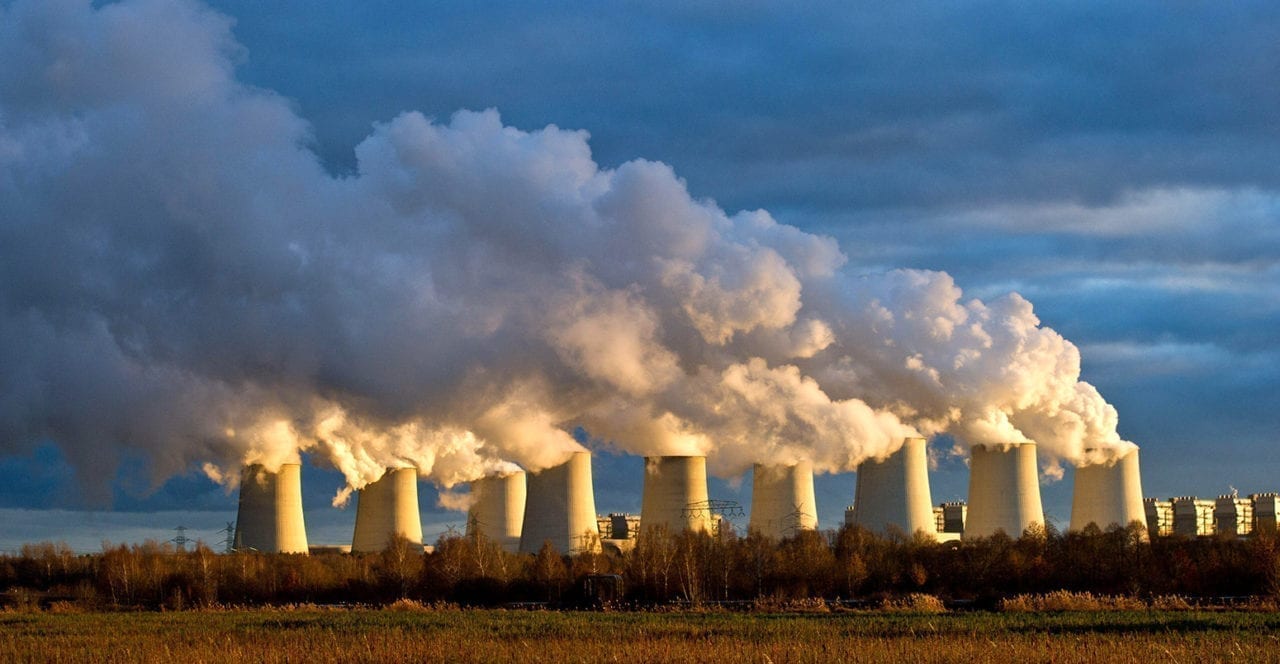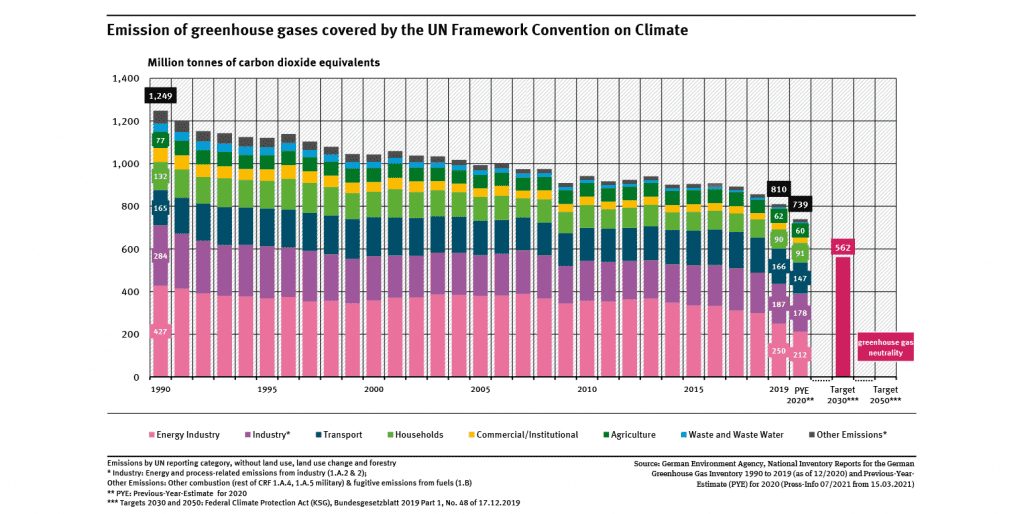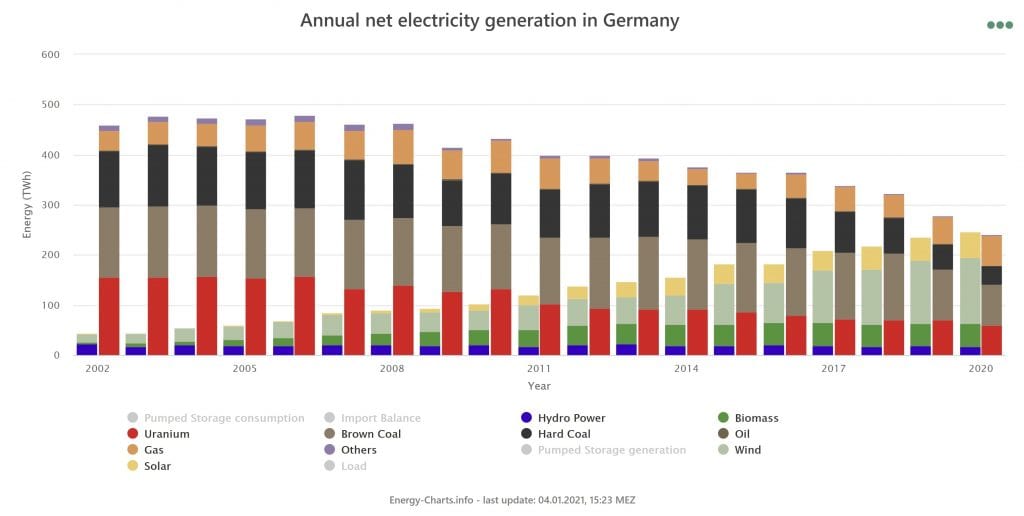Germany Shifts Net-Zero Target to 2045, Sets Tougher Limits for EnergyIndustry
The post Germany Shifts Net-Zero Target to 2045, Sets Tougher Limits for Energy Industry appeared first on POWER Magazine.

Germany has moved its climate neutrality target up from 2050 to 2045 and adopted new interim binding targets that will require greenhouse gas (GHG) emissions reductions of 65% by 2030 and 88% by 2040, compared to 1990 levels. After 2050, notably, the country-which is Europe's biggest economy-envisions it will achieve negative GHG emissions.
Germany's federal cabinet adopted the reforms to its Climate Change Act on May 12 as recommended by Federal Environment Minister Svenja Schulze to put the country on track to match new, higher European Union (EU) climate targets for 2030. As significantly, however, the reforms also respond to a landmark decision by the Federal Constitutional Court-Germany's highest court-on April 29 that said the government's December 2019-enacted climate action legislation was insufficient" because it lacked emission reduction targets beyond 2030.
The ambitious targets adopted Wednesday will seek to more appropriately" distribute climate action efforts up to 2045 across current and future generations," the Federal Ministry for the Environment, Nature Conservation, and Nuclear Safety said on Wednesday. In a statement, Federal Environment Minister Schulze also said the targets would provide greater planning certainty and resolute climate action that does not stifle industry, but instead restructures and [modernizes] it."
After the Federal Constitutional Court ruling almost two weeks ago, the German government decided not to wait for the implementation of the EU agreements, but to anticipate them and make adjustments later if necessary," the ministry said. The advantage of this is that no time is lost in the fight against climate change."
As amended, the Climate Change Act retains its system of year-specific permissible emission levels for individual sectors, but it drastically reduces them for specific industries through 2030. The majority of additional reductions" through 2030, however, will come from the energy sector. While the energy industry's permissible annual emissions stood at 280 million tons of CO2 equivalent (MTCO2e) in 2020, the revised act slashes those limits to 108 MTCO2e by 2030-more than 60%.
That reform takes into account Germany's adopted coal power phaseout by 2038, the ministry said. However, it said more deliberate action is under consideration to meet the new interim targets, noting: The German government will, in the coming weeks, also lay the groundwork for the new [2045] target with an immediate action programme."
 Germany's energy industry greenhouse gas (GHG) emissions have fallen consistently since 2011, contributing heavily to the country's overall GHG emissions reductions, which declined by more than 40.8% between 1990 and 2020. This April 2021 graphic from the German Environment Agency (Umwelt Bundesamt) does not reflect new targets adopted on May 12. Courtesy:German Environment Agency
Germany's energy industry greenhouse gas (GHG) emissions have fallen consistently since 2011, contributing heavily to the country's overall GHG emissions reductions, which declined by more than 40.8% between 1990 and 2020. This April 2021 graphic from the German Environment Agency (Umwelt Bundesamt) does not reflect new targets adopted on May 12. Courtesy:German Environment AgencyAs the German Environment Agency notes, Germany's energy sector GHG emissions have been falling consistently since 2011. In 2020, the energy sector recorded its most significant documented emissions reduction of nearly 38 million tonnes of CO2-14.5% less than in 2019. Last year, notably, the industry produced 221 MTCO2e in annual emissions, well below the 280 MTCO2e permitted by the federal Climate Change Act. The agency said the 2020 emissions drop from the energy sector are due to decreases of 23 MTCO2e in emissions from lignite-generated electricity and 13 MTCO2e in emissions from hard coal-generated electricity.
While the reductions to energy-specific emissions follow an economic approach to reduce where avoidance costs are lowest, the energy and industry sectors continue to be the sectors with the highest emissions," the ministry said on Wednesday. What's more, a renewable energy supply is the key to emissions reductions in all other sectors where a renewable power supply can replace fossil fuels."
 Germany's grid-connected power generation profile has transformed over the past two decades. In 2020, Germany generated 27%-the majority of its total generation-from wind, followed by lignite at 16.8%; nuclear at 12.5%; natural gas at 12.1%; solar at 10.5%; biomass at 9.3%; hard coal at 7.3%; hydropower at 3.7%; and oil at 0.3%. Courtesy: Faunhofer ISE
Germany's grid-connected power generation profile has transformed over the past two decades. In 2020, Germany generated 27%-the majority of its total generation-from wind, followed by lignite at 16.8%; nuclear at 12.5%; natural gas at 12.1%; solar at 10.5%; biomass at 9.3%; hard coal at 7.3%; hydropower at 3.7%; and oil at 0.3%. Courtesy: Faunhofer ISETo help Germany achieve negative emissions post-2050, the revised law seeks to preserve and expand natural sinks such as forests and peatlands. These sinks are necessary to offset unavoidable remaining greenhouse gas emissions, for instance, from livestock farming or certain industrial processes," the ministry said. The sink expansion process requires a lot of time. That is why the German government is already starting to intensify the wetting of peatlands and forest conversion and expansion," it said.
-Sonal Patel is a POWER senior associate editor (@sonalcpatel, @POWERmagazine).
The post Germany Shifts Net-Zero Target to 2045, Sets Tougher Limits for Energy Industry appeared first on POWER Magazine.